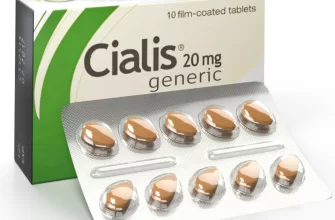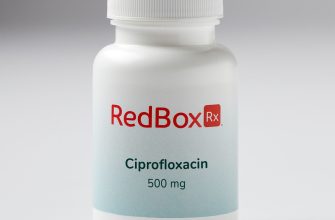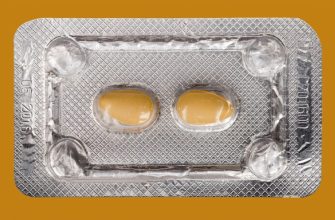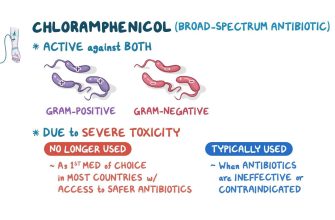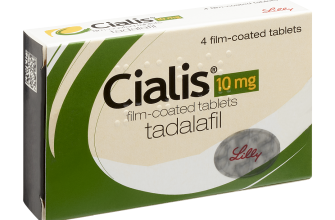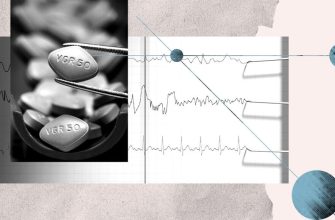Both finasteride and dutasteride are effective medications for managing benign prostatic hyperplasia (BPH). These treatments work by inhibiting the conversion of testosterone to dihydrotestosterone (DHT), a hormone that contributes to prostate growth. With consistent use, patients experience a reduction in urinary symptoms, leading to improved quality of life.
Clinical studies show that finasteride can reduce prostate size by approximately 20-30% within six months of treatment. Dutasteride, on the other hand, may offer a more significant reduction, with some studies indicating up to 50% reduction in prostate volume. This difference is due to dutasteride’s ability to inhibit both Type I and Type II 5-alpha reductase enzymes, compared to finasteride’s selective inhibition of Type II.
When considering these options, physicians often evaluate the severity of symptoms and the size of the prostate. For patients with larger prostate volumes or more severe symptoms, dutasteride may be the preferred choice. It’s crucial to monitor for potential side effects, such as sexual dysfunction and breast tenderness, which can occur with both medications. Regular follow-ups will help determine the best course of action for each patient.
- Finasteride and Dutasteride in BPH
- Understanding BPH: Definition and Prevalence
- Mechanism of Action: How Finasteride and Dutasteride Work
- Specific Actions of Finasteride
- Specific Actions of Dutasteride
- Clinical Efficacy of Finasteride in BPH Management
- Clinical Efficacy of Dutasteride in BPH Treatment
- Key Findings from Clinical Trials
- Safety and Tolerability
- Comparison of Side Effects: Finasteride vs. Dutasteride
- Long-term Outcomes of Finasteride and Dutasteride in BPH
- Symptomatic Relief and Quality of Life
- Long-term Safety Profile
- Patient Selection Criteria for Finasteride and Dutasteride
- Demographic Considerations
- Patient Preferences and Compliance
- Future Directions: Research Trends in BPH Treatment
Finasteride and Dutasteride in BPH
Finasteride and dutasteride are both effective treatments for benign prostatic hyperplasia (BPH), offering relief from urinary symptoms associated with this condition. Patients often see a reduction in prostate size, leading to improved flow rates and decreased nocturia.
Finasteride, a type II 5-alpha reductase inhibitor, primarily reduces dihydrotestosterone (DHT) levels. Clinical studies show that it can decrease prostate volume by about 20-30% over six months of treatment. This reduction correlates with symptomatic improvement, making it a first-line option for many men with moderate to severe BPH symptoms.
Dutasteride, on the other hand, inhibits both type I and type II 5-alpha reductase enzymes, offering a broader reduction in DHT levels. Research indicates that dutasteride may lead to a more significant and faster reduction in prostate volume compared to finasteride. Studies demonstrate that men taking dutasteride experience a greater improvement in symptoms and urinary flow rates, especially in the long term.
| Medication | Mechanism | Prostate Volume Reduction | Symptomatic Improvement |
|---|---|---|---|
| Finasteride | Type II 5-alpha reductase inhibitor | 20-30% over 6 months | Moderate improvement |
| Dutasteride | Type I and II 5-alpha reductase inhibitor | Greater than finasteride | Significant improvement |
Both medications have similar side effects, including sexual dysfunction and gynecomastia, although these occurrences do not generally deter patients from continuing treatment. While finasteride’s long-term safety is well-documented, dutasteride is also considered safe with ongoing studies confirming its efficacy.
In clinical practice, the choice between finasteride and dutasteride often depends on the severity of BPH symptoms, patient preference, and physician guidance. For patients presenting with more severe symptoms or those who haven’t responded well to finasteride, dutasteride may serve as a more suitable alternative.
Ultimately, both finasteride and dutasteride provide valuable options for patients dealing with BPH, enhancing quality of life through targeted management of urinary symptoms.
Understanding BPH: Definition and Prevalence
Benign prostatic hyperplasia (BPH) is a non-cancerous enlargement of the prostate gland, commonly affecting older men. This condition occurs as the prostate expands, leading to urinary symptoms due to pressure on the urethra. BPH is separate from prostate cancer but can significantly impact quality of life.
Prevalence rates for BPH increase with age. By age 50, approximately 50% of men experience some symptoms of BPH. This percentage rises to about 80% by age 80. Factors such as family history, obesity, and lifestyle also play a role in its development.
Symptoms of BPH include frequent urination, urgency to urinate, weak urinary stream, and difficulties in starting or stopping urination. These symptoms can lead to complications if not managed, such as urinary tract infections or bladder problems.
Regular check-ups with a healthcare provider can help monitor symptoms and assess prostate health. Early intervention can lead to better outcomes and improved quality of life for those affected by BPH.
Mechanism of Action: How Finasteride and Dutasteride Work
Finasteride and dutasteride reduce symptoms of benign prostatic hyperplasia (BPH) by inhibiting the conversion of testosterone to dihydrotestosterone (DHT). DHT plays a significant role in prostate growth. By blocking the enzyme 5-alpha-reductase, these medications lower DHT levels, leading to a decrease in prostate size and alleviating urinary symptoms.
Specific Actions of Finasteride
Finasteride selectively inhibits type II 5-alpha-reductase, primarily affecting the prostate, hair follicles, and skin. This selective action results in decreased DHT concentrations, contributing to improved urinary flow. Finasteride is usually taken at a dose of 5 mg per day for BPH management, and significant symptom relief can often be observed within six months of treatment.
Specific Actions of Dutasteride
Dutasteride inhibits both type I and type II 5-alpha-reductase enzymes. This dual inhibition allows for a more comprehensive reduction in DHT levels, which may be beneficial for patients experiencing more advanced symptoms of BPH. The standard dosing for dutasteride is 0.5 mg once daily, with many patients noticing improvements within a few weeks, although maximum benefits are typically seen after six months or more.
Both medications contribute to a decrease in prostate volume, leading to enhanced urinary function and improved quality of life for individuals with BPH. Regular follow-ups can help assess response to treatment and any potential side effects.
Clinical Efficacy of Finasteride in BPH Management
Finasteride significantly reduces prostate volume and alleviates urinary symptoms associated with benign prostatic hyperplasia (BPH). Clinical studies demonstrate that a daily dose of 5 mg can lead to approximately a 20-30% decrease in prostate size over six months to one year. As the prostate shrinks, patients often experience improved urinary flow rates and reduced frequency of nighttime urination.
In randomized controlled trials, finasteride showed a marked reduction in the risk of BPH-related surgeries and acute urinary retention. Patients treated with finasteride exhibited better symptom relief compared to those on placebo, measured using the International Prostate Symptom Score (IPSS). After one year of treatment, scores indicated a notable improvement, leading to better quality of life.
Long-term data indicate sustained benefits, with symptom relief maintained for years. Many practitioners recommend finasteride as a first-line option, particularly for men with enlarged prostates. Monitoring for side effects, such as sexual dysfunction or breast tenderness, is necessary but often manageable, allowing patients to continue benefiting from treatment. Overall, finasteride stands out as a reliable choice for managing BPH symptoms effectively.
Clinical Efficacy of Dutasteride in BPH Treatment
Dutasteride significantly improves symptoms and urinary flow in patients with benign prostatic hyperplasia (BPH). Clinical studies indicate that long-term use of dutasteride can reduce prostate volume, providing patients with noticeable relief from symptoms like urinary urgency and frequency.
Key Findings from Clinical Trials
In randomized controlled trials, patients treated with dutasteride showed a reduction in the International Prostate Symptom Score (IPSS) by approximately 30-40% after six months of treatment. This improvement often continues over time, with many patients reporting sustained benefits after one year or more. The reduction in prostate size contributes directly to these enhancements in urinary function.
Safety and Tolerability
Dutasteride boasts a favorable safety profile. Most patients tolerate the medication well, with common side effects including decreased libido and ejaculation disorders reported in a minority of users. Monitoring and patient education can mitigate these concerns, making dutasteride a reliable option for many dealing with BPH.
Comparison of Side Effects: Finasteride vs. Dutasteride
Both finasteride and dutasteride are effective for treating benign prostatic hyperplasia (BPH), but they exhibit different side effect profiles.
- Common Side Effects:
- Both medications can cause sexual side effects, including decreased libido, erectile dysfunction, and ejaculation disorders.
- These side effects occur in a similar percentage of users, typically around 2-10% for finasteride and 5-10% for dutasteride.
- Hormonal Effects:
- Dutasteride inhibits both type I and type II 5-alpha reductase enzymes, while finasteride primarily affects type II.
- This leads to a potentially higher likelihood of hormonal-related side effects, such as gynecomastia (breast tissue enlargement) with dutasteride.
- Discontinuation Symptoms:
- Finasteride users report more noticeable symptoms upon discontinuation than those taking dutasteride.
- Post-finasteride syndrome remains a topic of ongoing research and concern for some patients.
- Long-term Risks:
- Some studies suggest that dutasteride may carry a slightly higher risk for high-grade prostate cancer than finasteride, although the overall risk remains low.
- Monitoring prostate-specific antigen (PSA) levels is crucial for both medications, as these can be affected by treatment.
Choosing between finasteride and dutasteride should factor in individual tolerance for side effects, severity of symptoms, and overall health. Consulting with a healthcare provider is essential for making an informed decision.
Long-term Outcomes of Finasteride and Dutasteride in BPH
Finasteride and dutasteride significantly improve urinary symptoms and reduce the risk of acute urinary retention and surgery in patients with benign prostatic hyperplasia (BPH). Long-term studies indicate that these medications maintain symptom relief over extended periods, with evidence supporting their use for up to five years or more.
Symptomatic Relief and Quality of Life
Research shows that both finasteride and dutasteride lead to a notable decrease in the International Prostate Symptom Score (IPSS) over time. Patients often experience a reduction in urinary frequency, urgency, and nocturia. Enhanced quality of life indices correlate with these improvements, showing that men experience greater overall satisfaction during treatment. Clinical trials reveal that approximately 50-60% of patients notice significant symptom improvement within six months of starting therapy.
Long-term Safety Profile
Long-term use of finasteride and dutasteride demonstrates a favorable safety profile. Studies indicate that the incidence of serious side effects, including prostate cancer risk, is similar to placebo in many cases. While sexual side effects such as decreased libido or erectile dysfunction can occur, they often dissipate with continued therapy. Regular monitoring of prostate-specific antigen (PSA) levels is recommended to assess prostate health during treatment.
Patient Selection Criteria for Finasteride and Dutasteride
Choose patients with benign prostatic hyperplasia (BPH) presenting with moderate to severe symptoms, specifically those scoring 8 or higher on the American Urological Association Symptom Index (AUASI). Prioritize men with an enlarged prostate, typically indicated by a prostate volume of 30 cc or more on ultrasound, as they are more likely to benefit from 5-alpha-reductase inhibitors.
Assess the patient’s overall health, especially kidney and liver function. Moderate to severe renal impairment may warrant caution, while liver dysfunction could contraindicate dutasteride. Evaluate potential drug interactions, especially with medications metabolized by cytochrome P450 enzymes.
Demographic Considerations
Focus on men aged 50 years or older, as the prevalence of BPH increases with age. Ensure there are no signs of prostate cancer, as 5-alpha-reductase inhibitors are not suitable in these cases. Regular PSA testing is recommended to rule out malignancy before initiating treatment.
Patient Preferences and Compliance
Consider the willingness of the patient to adhere to long-term therapy. Discuss potential side effects, including sexual dysfunction, and weigh these against the benefits of symptom relief. Engage the patient in shared decision-making to optimize compliance and satisfaction with the treatment plan.
Regular follow-up appointments should be scheduled to monitor symptom improvement, PSA levels, and any adverse effects associated with treatment. Adjust the management strategy based on the patient’s response and ongoing health status.
Future Directions: Research Trends in BPH Treatment
Continuing research focuses on enhancing the treatment options available for Benign Prostatic Hyperplasia (BPH), specifically through innovative drug development and combination therapies.
- Next-Generation 5-Alpha Reductase Inhibitors: Investigate new compounds targeting the 5-alpha reductase enzyme, aiming for improved efficacy and reduced side effects compared to finasteride and dutasteride.
- Combination Therapies: Study the effects of combining current treatments, such as 5-alpha reductase inhibitors with alpha-blockers, to maximize symptom relief and improve quality of life.
- Novel Mechanisms of Action: Explore agents that utilize different pathways, such as anti-inflammatory or hormonal approaches, which may provide alternative solutions for patients who do not respond well to existing therapies.
- Patient-Centric Approaches: Focus on personalized medicine by analyzing genetic markers that could predict treatment responses, making therapy more tailored to individual needs.
- Longitudinal Studies: Conduct studies over extended periods to assess the long-term safety and effectiveness of new and existing BPH therapies, particularly for elderly patients.
- Use of Biomarkers: Identify biomarkers that can aid in early detection and define the progression of BPH, potentially allowing for more timely and effective interventions.
- Minimally Invasive Techniques: Research advances in minimally invasive surgical options and their integration with pharmacotherapy to improve patient outcomes with fewer complications.
These directions hold promise for more effective BPH management, focusing on addressing both symptoms and underlying causes with targeted therapies tailored to individual needs.


